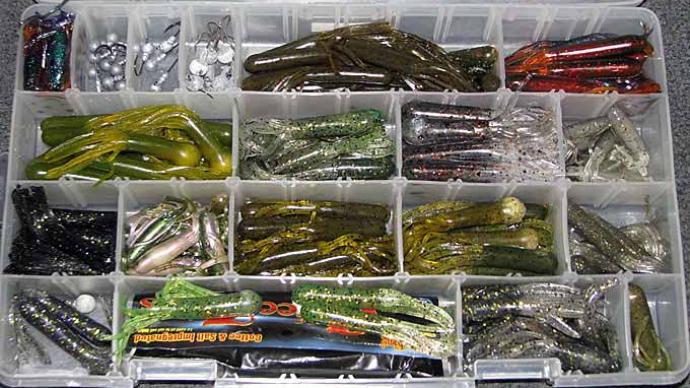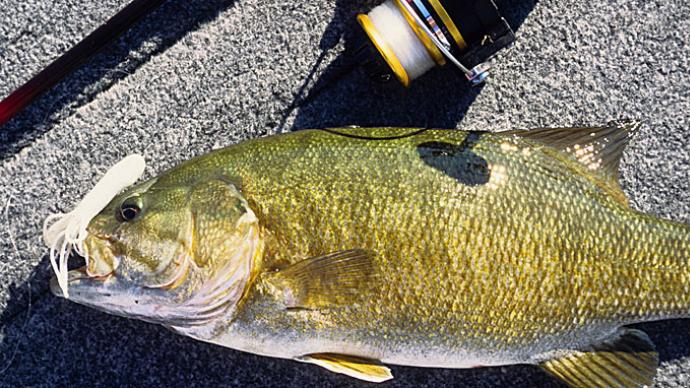Tube jigs (like the Fat Gitzit) are excellent for clear water and inactive fish. This lure is used on structure when targeting bass. It's designed to be used as a drop bait, not to swim back or work the bottom. Other lures work better for that. It's not a "feel" lure meaning you can give it slack and not worry about a quick hookset because the fish just won't let go. It's usually used in water no deeper than 10 feet deep. Use a spinning reel on a 6-6 1/2 foot medium-light to medium action rod for best results.
How to Fish Tube Baits
- Insert a light (1/16 to 1/8 ounce) lead head jig with a 2/0 hook into the hollow body (push the jig eye through the plastic), cast it on light line, and allow it to spiral down to the bass, like a dying baitfish.
- You must let the bait fall on total slackline for the proper presentation.
- Let it sit on the bottom, then gently raise your rod tip until you feel the bait. If it feels "funny" (i.e. spongy, weighs a little more or less), set the hook!
- Lift and drop once or twice, then reel back.
Tips
- A popular rigging method uses a 2/0 Trokar tube hook or a 2/0 offset shank hook with a Glider weight inserted in the body. This weedless rig is best used in cover.
- Use a heavier weight (1/8 - 1/4 ounce) in vegetation.
- Tighten your drag for better hooksets, then loosen during the fight.
- Once the fish is away from cover, stop reeling and let the fish tire out. The line and rod will absorb the fight, reducing the risk of line breakage once the fish gets close to the boat.
- To eliminate loops and knots in your line, manually close the bail on your reel and pull the line taught in front of the reel. Then reel up the loose line.
- When using a tube with a weight, use two small bullet-style weights pinched on the line. This will make it fall erratically, and the weight will not have to be pegged.
- Hook the tube near the back legs, giving it a curve. The curve gives the tube a lively action when the rod tip is jerked about 1 foot every 2-3 seconds.
- When I go for the big ones, I use my tube to extend the rod and retrieve it. Once the worm is down and the line slack, count to 10 and give two easy twitches. This allows the worm to do as it pleases, and you're not retrieving line. If there are no hits on the first time, try two more twitches, and I guarantee lunkers will fly.
- Try using Gambler's Florida rig weights. They screw into the tip of the tube and stay put. They also make one that rattles and can be deadly!! I usually use 1/8- to 1/4-ounce, depending on the cover I am trying to get through. They also make a 1/32-ounce that is great when you want a much slower fall. These work great in winter and early spring when you need a very slow presentation.




